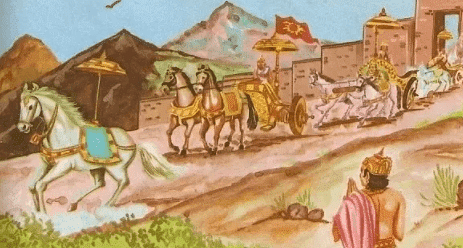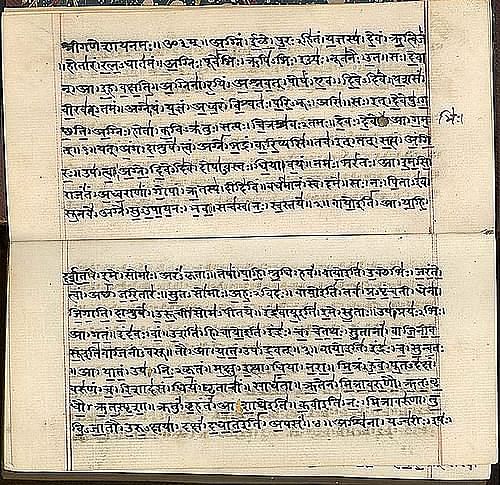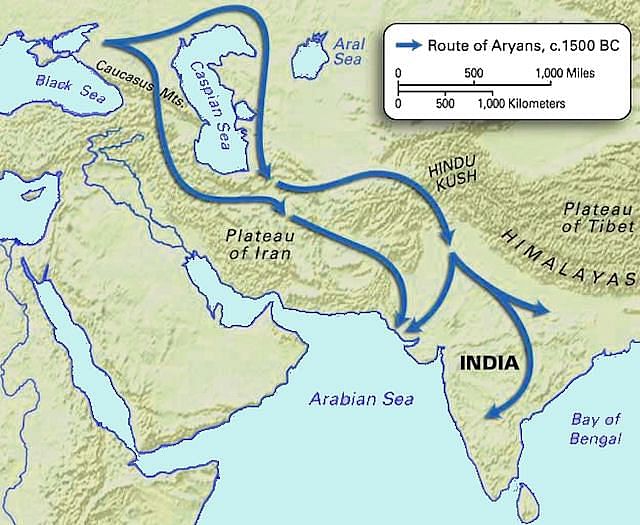
What are the topics on which essays were asked in the previous UPSC examinations?In the year 1993, the essays questions in UPSC Mains were:
- My vision of India in 2001 AD.
- The emerging global order—political and economic.
- “He who reigns within himself and rules his passions, desires and fears is more than a king.”
- Compassion is the basis of all morality.
- Men have failed, let women take over.
- Economic growth without distributive justice is bound to breed violence.
- Ecological considerations need not hamper development.
- Computer: The harbinger of a silent revolution.
In the year 1994, the essays questions in UPSC Mains were:
- The challenge before a civil servant today.
- Indian society at the cross road.
- Youth is a blunder, manhood a struggle, old age a regret.
- Modernization and Westernization are not identical concepts.
- A useless life is an early death.
- Politics, business and bureaucracy—a fatal triangle.
- Multinational corporations-saviours or saboteurs.
In the year 1995, the essays questions in UPSC Mains were:
- Politics without ethics is a disaster.
- The new emerging woman power the ground realities.
- When money speaks, the truth is silent.
- Whither Indian democracy?
- Restructuring of the Indian education system.
- Disinterested intellectual curiosity is the life blood of real civilization.
- Our deeds determine us as much as we determine our deeds.
In the year 1996, the essays questions in UPSC Mains were:
- Literacy is growing very fast but there is no corresponding growth in education.
- Restructuring of the UNO to reflect present realities.
- New cults and godman— a threat to traditional religions.
- The VIP cult is a bane of Indian democracy.
- Need for transparency in Public Administration.
- Truth is lived, not taught.
In the year 1997, the essays questions in UPSC Mains were:
- What we have not learnt during fifty years of Independence.
- Judicial activism.
- Great political power will not improve women's plight.
- True religion can not be misused.
- The modern doctors and its patients.
- Urbanization is a blessing in disguise.
In the year 1998, the essays questions in UPSC Mains were:
- Composite culture of India.
- Woman is god's best creation.
- Misinterpretation and misuse of freedom in India.
- India's contribution to world's wisdom.
- The language problem in India - its past, present and prospects.
- World of the 21st century.
In the year 1999, the essays questions in UPSC Mains were:
- Women's empowerment–The challenge and prospect.
- The youth culture today.
- Mass media and cultural invasion.
- Resource management in the Indian context.
- Value based science and education.
- Reservation, politics and empowerment.
In the year 2000, the essays questions in UPSC Mains were:
- Why should we be proud of being Indians?
- The Cyber World — Its charms & challenges.
- The country’s need for a better disaster management system.
- Indian Culture today—a myth or a reality?
- The implication of Globalisation for India.
- Modernism and our transitional socio-ethical values.
In the year 2001, the essays questions in UPSC Mains were:
- What have we gained from our democratic set-up?
- My vision of an ideal world order.
- The march of science and the erosion of human values.
- Irrelevance of the classroom.
- The pursuit of excellence.
- Empowerment alone cannot help our women.
In the year 2002, the essays questions in UPSC Mains were:
- Modern technological education and human values.
- Search for truth can only be a spiritual problem.
- If youth knew, if age could.
- The paths of glory lead but to the grave.
- Privatization of higher education in India.
- Responsibility of media in a democracy.
In the year 2003, the essays questions in UPSC Mains were:
- The Masks of New Imperialism.
- How far has democracy in India delivered the goods?
- How should a civil servant conduct himself?
- As civilization advances culture declines.
- There is nothing either good or bad but thinking makes it so.
- Spirituality and Scientific temper.
In the year 2004, the essays questions in UPSC Mains were:
- India’s Role in Promoting ASEAN Co-operation.
- Judicial Activism and Indian Democracy.
- Whither Women’s Emancipation?
- Globalizations and Its Impact on Indian Culture.
- The Lure of Space.
- Water Resources Should Be Under the Control of the Central Government.
In the year 2005, the essays questions in UPSC Mains were:
- Justice must reach the poor.
- The hand that rocks the cradle.
- If women ruled the world.
- What is real education?
- Terrorism and world peace.
- Food security for sustainable national development.
In the year 2006, the essays questions in UPSC Mains were:
- Women’s Reservation Bill Would Usher in Empowerment for Women in India.
- Protection of Ecology and Environment is Essential for Sustained Economic Development.
- Importance of Indo-U.S. Nuclear Agreement.
- “Education for All” Campaign in India: Myth or Reality.
- Globalization Would Finish Small-Scale Industries in India.
- Increasing Computerization Would lead to the Creation of a Dehumanized Society.
In the year 2007, the essays questions in UPSC Mains were:
- Independent thinking should be encouraged right form the childhood.
- Evaluation of Panchayati Raj System in India from the point of view of eradication of power to people.
- Attitude makes, habit makes character and character makes a man.
- Is Autonomy the best answer to combat balkanization?
- How has satellite television brought about cultural change in Indian mindsets.
- BPO boom in India.
In the year 2008, the essays questions in UPSC Mains were:
- Role of Media in good governance.
- National Identity and Patriotism.
- Special Economic Zone: Boon or Bane.
- Discipline means success , anarchy means ruin.
- Urbanisation and Its Hazards.
- Is an Egalitarian society possible by educating the masses?
In the year 2009, the essays questions in UPSC Mains were:
- Are our traditional handicrafts doomed to a slow death?
- Are we a ‘Soft’ state?
- “The focus of health care is increasingly getting skewed towards the ‘haves’ of our society”.
- “Good Fences make good neighbours”.
- ‘Globalization’ vs. ‘Nationalism’.
In the year 2010, the essays questions in UPSC Mains were:
- Geography may remain the same; history need not.
- Should a moratorium be imposed on all fresh mining in tribal areas of the country?
- Preparedness of our society for India’s global leadership role.
- From traditional Indian philanthropy to the Gates-Buffet model-a natural progression or a paradigm shift?
In the year 2011, the essays questions in UPSC Mains were:
- Creation of smaller states and the consequent administrative , economic and developmental implication.
- Does Indian Cinema shape our popular culture or merely reflect it.
- Credit – based higher education system – status , opportunities and challenges.
- In the Indian context, Both human intelligence and technical intelligence are crucial in combating terrorism.
In the year 2012, the essays questions in UPSC Mains were:
- In the context of Gandhiji’s views on the matter, explore, on an evolutionary scale, the terms ‘Swadhinata’, ‘Swaraj’ and ‘Dharmarajya’. Critically comment on their contemporary relevance to Indian democracy.
- Is the criticism that the ‘Public-Private-Partnership’ (PPP) model for development is more of a bane than a boon in the Indian context, justified?
- Science and Mysticism: Are they compatible?
- Managing work and home – is the Indian working woman getting a fair deal?
In the year 2013, the essays questions in UPSC Mains were:
- Be the change you want to see in others (Gandhi).
- Is the Colonial mentality hindering India’s Success.
- GDP (Gross Domestic Product) along with GDH (Gross Domestic Happiness) would be the right indices for judging the well being of a country.
- Science and technology is the panacea for the growth and security of the nation.
In the year 2014, the essays questions in UPSC Mains were:
Section A
- With greater power comes greater responsibility.
- Is the growing level of competition good for youth?
- Are the standardized tests good measures of academic ability or progress?
- Words are sharper than the two-edged sword.
Section B
- Was it the policy paralysis or the paralysis of implementation which slowed the growth of our country?
- Is sting operation an invasion on privacy?
- “Fifty Golds in Olympics”: Can this be a reality for India?
- “Tourism”: Can this be the next big thing for India?
In the year 2015, the essays questions in UPSC Mains were:
Section-A
- Lending hands to someone is better than giving a dole.
- Quick but steady wins the race.
- Character of an institution is reflected in its leader.
- Education without values, as useful as it is, seems rather to make a man more clever devil.
Section-B
- Technology cannot replace manpower.
- Crisis faced in India – moral or economic.
- Dreams which should not let India sleep.
- Can capitalism bring inclusive growth?
In the year 2016, the essays questions in UPSC Mains were:
Section - A
- If development is not engendered, it is endangered.
- Need brings greed, if greed increases it spoils breed.
- Water disputes between states in Federal India.
- Innovation is the key determinant of economic growth & social welfare.
Section - B
- Cooperative federalism: Myth or reality.
- Cyberspace and Internet: Blessing or curse to the human civilisation in the long run.
- Near jobless growth in India: An anomaly or an outcome of economic reforms.
- Digital economy: A leveller or a source of economic inequality.
In the year 2017, the essays questions in UPSC Mains were:
Section - A
- Farming has lost the ability to be a source of subsistence for majority of farmers in India.
- Impact of the new economic measures on fiscal ties between the union and states in India.
- Destiny of a nation is shaped in its classrooms.
- Has the Non- Alignment Movement(NAM) lost its relevance in a multipolar world?
Section - B
- Joy is the simplest form of gratitude.
- Fulfillment of ‘new woman’ in India is a myth.
- We may brave human laws but cannot resist natural laws.
- Social media is inherently a selfish medium.
In the year 2018, the essays questions in UPSC Mains were:
Section - A
- Alternative technologies for a climate change resilient India
- A good life is one inspired by love and guided by knowledge
- Poverty anywhere is a threat to prosperity everywhere
- Management of Indian border disputes – a complex task
Section - B
- Customary morality cannot be a guide to modern life
- “The past’ is a permanent dimension of human consciousness and values
- A people that values its privileges above its principles loses both
- Reality does not conform to the ideal, but confirms it
In the year 2019, the essays questions in UPSC Mains were:
Section - A
- Wisdom finds truth
- Values are not what humanity is, but what humanity ought to be
- Best for an individual is not necessarily best for the society
- Courage to accept and dedication to improve are two keys to success
Section - B
- South Asian societies are woven not around the state, but around their plural cultures and plural identities
- Neglect of primary health care and education in India are reasons for its backwardness
- Biased media is a real threat to Indian democracy
- Rise of Artificial Intelligence: The threat of a jobless future or better job opportunities through reskilling and up-skilling.
In the year 2020, the essays questions in UPSC Mains were:
Section - A
1. Life is a long journey between human beings and being humane.
2. Mindful manifesto is the catalyst to a tranquil self.
3. Ships do not sink because of water around them, ships sink because of water that gets into them.
4. Simplicity is the ultimate sophistication.
Section - B
1. Culture is what we are, civilisation is what we have.
2. There can be no social justice without economic prosperity but economic prosperity without social justice is meaningless.
3. Patriarchy is the least noticed yet the most significant structure of social inequality.
4. Technology as the silent factor in international relations.
In the year 2021, the essays questions in UPSC Mains were:
Section - A
1. The process of self-discovery has now been technologically outsourced.
2. Your perception of me is a reflection of you; my reaction to you is an awareness of me.
3. Philosophy of wantlessness is Utopian, while materialism is a chimera.
4. The real is rational and the rational is real.





